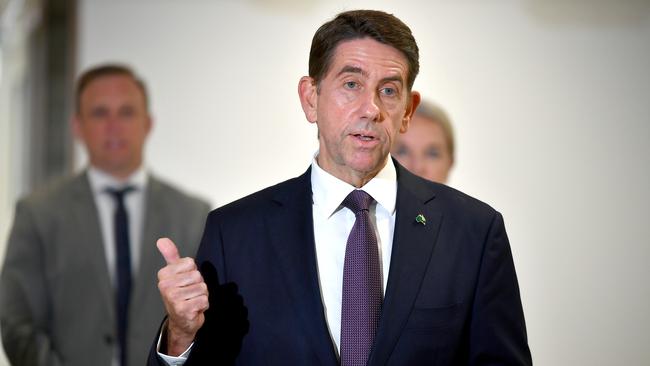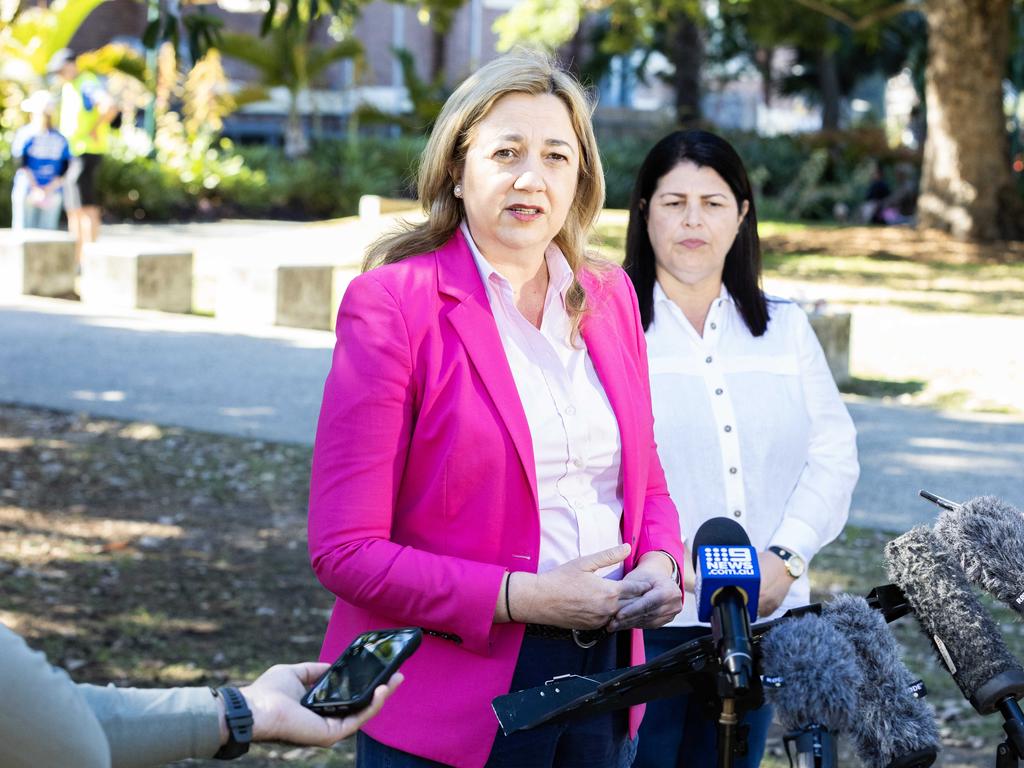Mayors accuse Palaszczuk government of hoarding coal royalties
Mayors of Queensland’s coal mining regions have accused the Palaszczuk government of depriving them of their fair share of billions of dollars in new royalty streams.

Mayors of Queensland’s coalmining regions have accused the Palaszczuk government of depriving them of their fair share of billions of dollars in new royalty streams.
Booming coal prices and the Labor government’s controversial royalty scheme – which includes the highest mining tax rates in the world – is delivering an estimated $13bn in revenue this financial year and an expected record operating surplus in the June budget
International coal sales have more than doubled from $39.4bn in 2021 to $83.1bn in 2022, generating huge royalty windfalls that Treasurer Cameron Dick has indicated will be spent on paying down debt and alleviating cost-of-living pressures for families.
But mayors of three councils that cover concentrated coalmining areas and mine service centres are demanding that the government boost funding for depleted infrastructure in their regions and help develop new industries.
Kerry Hayes, mayor of the Central Highlands Regional Council – which covers an area that produces about a third of Queensland’s coal – said some infrastructure, like water treatment plants, had been built by the mining companies as they first set up the projects and were now in desperate need of updating.
Mr Hayes said the new royalty rates, announced last year with limited consultation with industry, had led to the shelving of at least two big projects in his region.
“We need to put in infrastructure to make these areas liveable, and to encourage workers to come out here – but who is going to pay for it now,’’ he said.
“The royalty scheme has produced a huge uptick in the income streams for the government but it has had an impact on the companies that have long invested out here, it was a big knock.’’
Rockhampton regional mayor Tony Williams said the government needed to give a “fair share to the regions”, adding: “A lot of the money is spent in the southeast; we would like to see a fair return to the communities where the money is generated.”
Toowoomba mayor Paul Antonio said the government was neglecting the regions.
“They just don’t understand the services we provide,” Mr Antonio said. “The demand for infrastructure is huge and they don’t recognise that.”
Mr Dick on Monday insisted “regional Queenslanders are the beneficiaries of these progressive coal royalties”, which he said were helping to fund a new hospital in Moranbah and renovate others at Mackay, Townsville and Cairns.
Extra coal revenue is also being put into a central Queensland water pipeline and the CopperString electricity transmission line in north Queensland.
A separate $100m regional infrastructure fund, set up in 2019 with contributions from mining companies, has paid for a series of upgrades to sport and community centres, new childcare facilities and affordable housing units.
An auditor-general report, released on Monday, found higher revenue from coal royalties had also “assisted in managing the debt balance”.
“The improved conditions have meant the government borrowed less than budgeted in 2021–22, as there were more operating cash flows to fund planned capital expenditure,” it states.
Mr Dick said the coal royalty regime would not be changed by “one cent or one percentage” if Labor won next year’s election.
He also refuted criticism from Queensland Resources Council chief Ian MacFarlane that the royalty scheme was threatening future investment in regional Queensland and may lead to the closure of mines.
Mr Dick said the QRC argument “absolutely holds no water at all”.






To join the conversation, please log in. Don't have an account? Register
Join the conversation, you are commenting as Logout